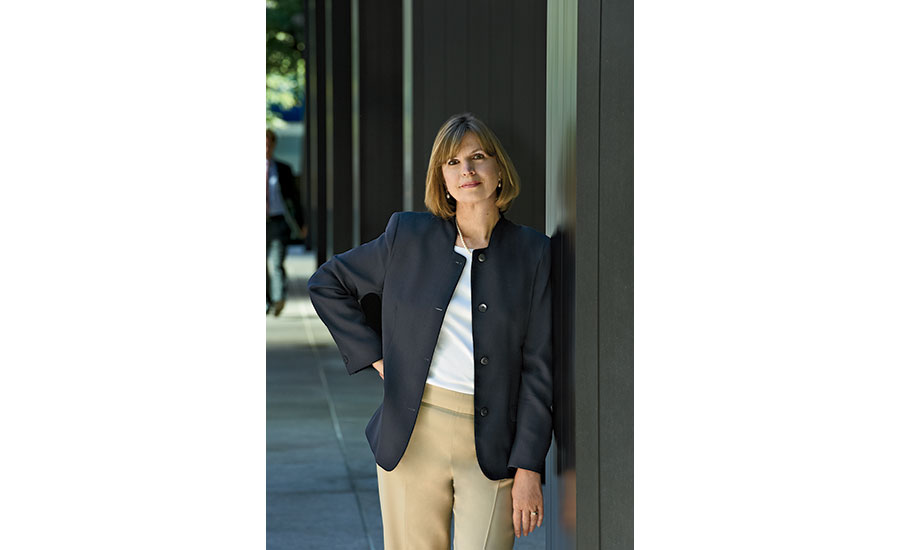We at RECORD were deep into preparing this month’s issue when the startling, sad news broke of Zaha Hadid’s death at age 65. The outpouring of mourning, on the Internet, in various publications, and on social media, was amazing—much of it from women in architecture for whom she was a trailblazer. Of course, no woman wants to be known as a “woman architect,” least of all Zaha herself. Early in her career, she fiercely deflected the label: she was, in her way, a woman who was one of the guys, whether dining with the “boys’ club” of architects that the late Philip Johnson used to bring together in New York or as the first female to join the elite Pritzker laureates. But she later admitted to experiencing sexism, calling out “misogynist behavior” in the U.K., where she had established her office. When the Architects Journal in London honored her for her “outstanding contribution to the status of women in architecture” in 2012, she was no longer a reluctant role model. “I see this incredible amount of need from other women for reassurance that it could be done,” she said, “so I don’t mind that at all.”
The following year, Denise Scott Brown made a video speech for the Architects Journal that went viral, unleashing a torrent of support for reversing Scott Brown’s exclusion from the Pritzker Prize, which had honored her partner Robert Venturi in 1991. That campaign failed, but it did spark another—to change the rules of the AIA Gold Medal to allow two collaborators to share the award. This month, Venturi, now 90, and Scott Brown, 84, will finally receive that medal, at a ceremony during the national AIA convention in Philadelphia.
But change is slow. Only this year did Zaha Hadid become the first woman to win, as a solo practitioner, the Royal Institute of British Architects’s Gold Medal—an honor “totally overdue,” said RIBA’s president. In the award citation, Peter Cook, the founder of Archigram, described Zaha as “our heroine” who, “for three decades now, has ventured where few would dare.”
Daring is just one word to describe her and her architecture. Rem Koolhaas, her early teacher and close friend, said Zaha was “somebody with a rare kind of courage.” She was fearless, determined, unburdened by a need to please. She was also, as Koolhaas noted, an Arab who was not bound by Western conventions. The city of Baghdad where she grew up in the 1950s was then a cosmopolitan and diverse crossroads. That was reflected in her own childhood playmates; she attended a Catholic school, where, she said, she and the other Muslim and Jewish girls got to have extra recess, while the Catholic girls attended compulsory chapel. Later, she studied mathematics in Beirut before moving to London to study architecture.
Certainly the daring of Zaha’s work transcends gender or biographical detail—though, as critic Paul Goldberger writes in his tribute to her in this issue, it was “often hard to separate her larger-than-life persona from her striking work”. But history will begin to disentangle the passionate character from the extraordinary buildings she created—from Azerbaijan and China to Rome, where RECORD contributing photographer Iwan Baan shot her inside her Maxxi Museum in 2009, as shown on this month’s cover.
“I have always believed in progress and in creativity’s role in progress,” said Zaha. And so it seems a bit uncanny that the issue in which we honor her is devoted to creativity and architecture.
Creativity is a slippery subject. Philosophers and scientists have been trying to penetrate the mystery of the creative impulse for centuries—and they still don’t have all the answers. In a fascinating new book, The Creative Architect: Inside the Great Midcentury Personality Study, scholar Pierluigi Serraino delves into a little-known research project at the University of California in Berkeley in the late 1950s that tried to delineate the qualities, and the turns of mind, that 40 prominent architects possessed and brought to their creative tasks. These included Eero Saarinen, Richard Neutra, and Philip Johnson, whose case studies are excerpted in the pages ahead.
Zaha’s own creativity changed the culture of architecture today—not just because her structures manifested the pioneering potential of digital technology but because they sprang from an incredible mind, first expressed in the beautiful paintings she made, inspired by Russian Constructivism, that somewhat enigmatically conveyed, in colorful shards of planes and angles, a radical new conception of space and context. She defied categorization and helped lead, and unlock, all that architecture in the 21st century could become.






